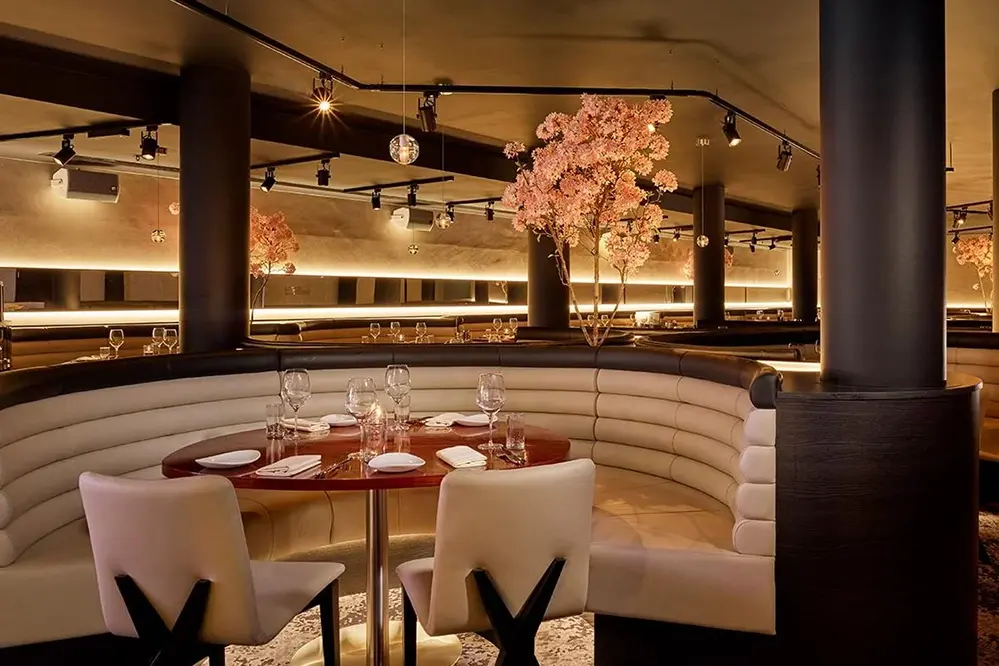“Lighting is the first element of design; without it, there is no architecture,” said renowned architect Le Corbusier. Understanding how to choose LED lighting for a restaurant is essential for creating a space that is both functional and aesthetically pleasing.
Lighting affects various aspects of a restaurant, from the ambiance and mood to the perception of food quality and overall customer satisfaction. It plays a pivotal role in defining the dining experience and can even influence diners’ emotions and behavior.
Eager to learn more about how the right LED lighting can transform your restaurant? Continue reading to uncover expert tips and insights that will guide you in making the best lighting choices for your establishment.
Importance of Lighting in Restaurants
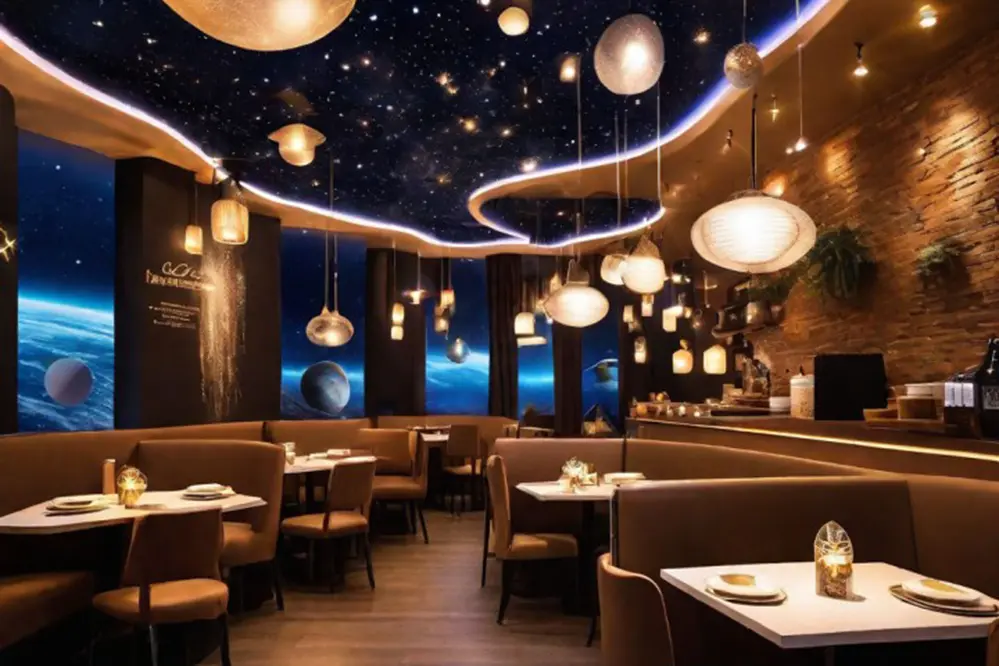
Lighting profoundly affects how diners perceive a restaurant, shaping their overall experience and influencing their mood.
Without question, the right illumination transforms a dining environment into a welcoming haven, enhancing both aesthetic appeal and culinary enjoyment. Strategically chosen lighting not only emphasizes the restaurant’s unique style but also highlights architectural features and meticulously plated dishes.
Moreover, ambiance achieved by thoughtful lighting fosters a warm atmosphere. This not only encourages patrons to linger and savor their meals but also invites return visits, an essential element for establishing a loyal customer base.
Ultimately, the right lighting serves not only functional purposes but also enriches the dining experience, creating an environment where patrons feel relaxed and valued. It stands as a testament to the restaurant’s commitment to every detail, pushing the establishment towards greater success and recognition in a competitive industry.
Understanding LED Lighting
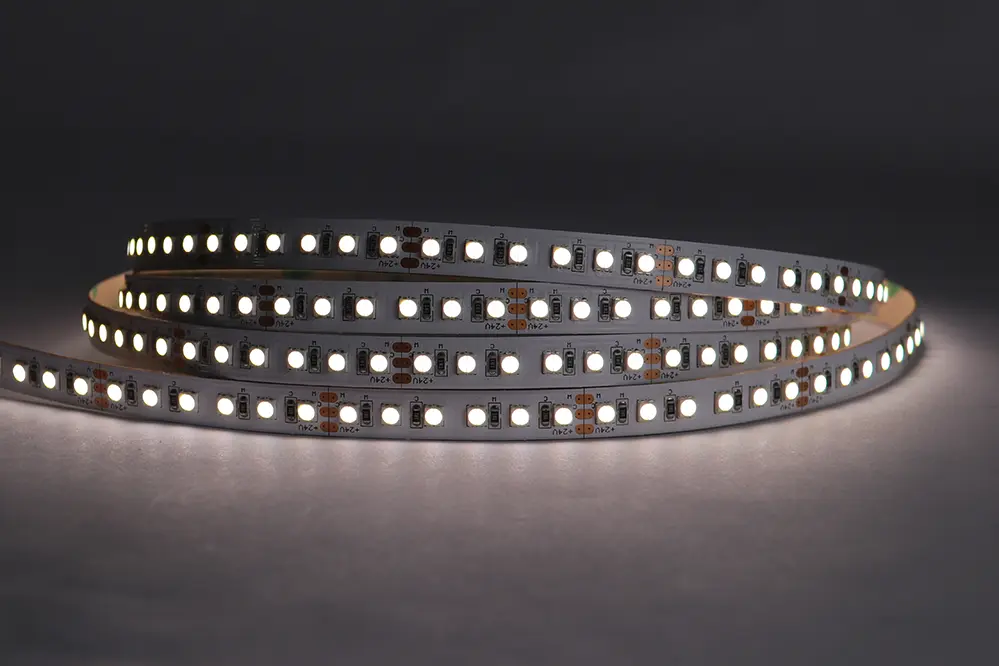
LED lighting revolutionizes restaurant ambiance.
Understanding how LED lights work can transform a dining space. They offer flexibility in color and brightness, enabling restaurateurs to craft distinctive environments that resonate with their brand. Moreover, their longevity and energy efficiency reduce maintenance costs and environmental impact, promoting sustainability alongside sophistication.
Efficiency meets aesthetics.
LED lighting also provides options for dimming capabilities, giving restaurateurs control over the intensity of light. This flexibility ensures every corner of the dining area can be adjusted to the desired ambiance.
They can create varied lighting schemes – from bright, invigorating settings ideal for breakfast, to soft, intimate glows perfect for dinner. LED lighting elevates the dining experience, fostering a memorable atmosphere that beckons patrons back time and again.
Benefits of LED Lighting
LED lighting enhances a restaurant’s aesthetic while offering cost-effective solutions that preserve longevity and efficiency.
Its energy consumption is significantly lower compared to traditional lighting.
This reduction in energy usage translates to substantial savings on electricity bills over time.
In addition to economic advantages, LED bulbs have an impressive lifespan, minimizing the frequency of replacements and thereby reducing ongoing maintenance expenses. The resilience of LED lights to frequent switching on and off makes them ideal for high-traffic environments like restaurants, where ambiance control is crucial to the dining experience.
How to Choose LED Lighting for a Restaurant
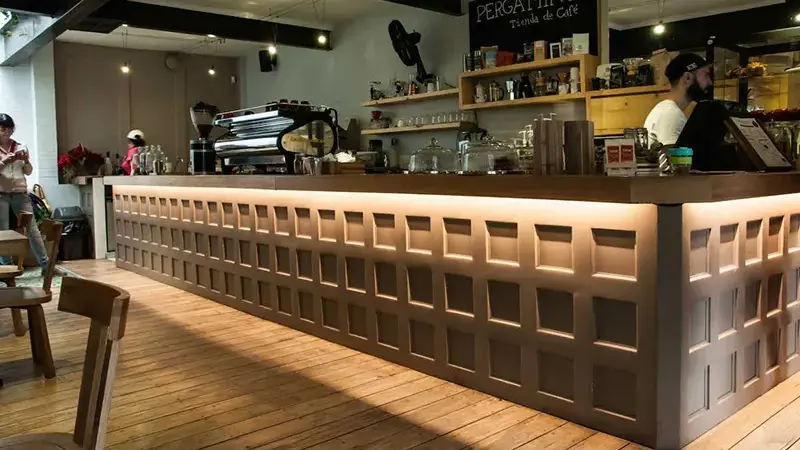
Understanding how to choose LED lighting for a restaurant involves considering various factors that impact ambiance and efficiency.
One should assess the restaurant’s unique atmosphere and target audience, ensuring that the lighting complements the dining experience. It’s beneficial to consider the color temperature and brightness of the LEDs to create the desired mood for different times of the day.
Incorporating dimmable and customizable lighting options can further enhance the flexibility of your restaurant’s ambiance.
Analyze Restaurant Ambiance
Choosing the right LED lighting for a restaurant requires an analysis of the desired ambiance. Lighting significantly impacts customer experience, influencing their mood and perception.
The ambiance can vary based on the restaurant’s theme, whether it’s a cozy diner or an upscale establishment. Identifying areas that require specific lighting intensities is crucial to setting the right tone.
LED lighting can be tailored to suit any ambiance through adjustable brightness and color.
Aligning lighting with the architectural design and décor of the restaurant enhances the overall aesthetic. This approach ensures both functionality and style, contributing to an inviting and memorable dining experience. Advanced LED technology can transform any setting into an ideal atmosphere for patrons.
Select Appropriate Color Temperature
Determining the correct color temperature for LED lighting is essential, impacting the ambiance, mood, and overall experience of a restaurant. Selecting the right color temperature helps create a compelling environment.
Different restaurant zones may require varied color temperatures depending on their functionality.
Warm light temperature, ranging between 2000K to 3000K, tends to create a cozy, intimate atmosphere ideal for dining areas.
Conversely, cooler temperatures, between 4000K to 5000K, can be advantageous for kitchens and prep areas.
The harmonious blend of warm and cool tones not only enhances visual appeal but also aligns with the restaurant’s theme, ensuring a cohesive experience.
Ultimately, the choice of color temperature affects a guest’s perception and comfort. Thoughtfully selecting appropriate temperatures can elevate the dining experience, offering customers an inviting and visually pleasing environment.
Determine Lighting Zones
Defining distinct lighting zones is pivotal when choosing LED lighting for a restaurant.
Each area, be it the dining space, bar, kitchen, or restroom, benefits from tailored lighting solutions that enhance their specific functions and elevate the overall dining experience. Thoughtfully illuminating these zones ensures a seamless blend of aesthetics and functionality.
Consider the dining area, which requires a balance of ambient and accent lighting to create an inviting atmosphere. In contrast, the kitchen necessitates bright, efficient lighting to facilitate safe and precise preparation of meals.
Furthermore, utilizing versatile lighting solutions in zones like the bar and transitional spaces can contribute significantly to the restaurant’s ambiance. These areas benefit from dynamic lighting that adapts to different times of the day, enhancing the mood and enabling a captivating dining experience. Through strategic zoning, the establishment can achieve an optimal lighting balance that resonates with patrons and staff alike.
Assess Energy Efficiency and Cost
Energy efficiency is paramount in choosing illumination.
Opting for LED lighting can significantly reduce energy costs, enhancing energy saving initiatives. This efficient light source utilizes less power while providing superior brightness and longevity, making it an ideal choice for a bustling restaurant environment. Consequently, they not only cut down on electricity bills but also diminish the carbon footprint, aligning with sustainability goals.
LEDs’ long lifespan cuts replacement costs.
Replacing bulbs less frequently – in a busy restaurant where lights may be on for extended hours – will result in fewer disruptions. This leads to a smoother operation and uninterrupted dining experiences.
Moreover, substantial savings on energy expenses combine with diminished maintenance efforts, fostering a smooth, cost-effective solution that aligns with long-term goals. Integrating LED lighting paves the way towards an economically viable, eco-friendly establishment.
Evaluate Dimmable Options
Selecting dimmable LED lighting allows for flexibility in ambiance, making it crucial for restaurant settings.
- Customer Experience: Dimming lights can create a more intimate and relaxing atmosphere for diners.
- Energy Savings: Adjusting light levels can lead to further energy conservation.
- Versatility: It enables the setting of different moods for various occasions or times of the day.
- Control Systems: Modern dimmable LEDs often integrate with smart control systems for easier management.
Dimmable options help tailor the dining experience to meet varied customer preferences.
They enable the establishment to maintain a vibrant and adaptable atmosphere, contributing to customer satisfaction and operational efficiency.
Types of LED Lights for Restaurants
Restaurant owners have a wealth of options when it comes to LED lighting, allowing them to perfectly match their establishment’s aesthetics. Pendant lights, for instance, provide focused illumination, creating cozy dining spots and enhancing the decor.
On the other hand, ambient LED lights, such as “wall washers,” bathe entire areas in a soft glow, adding depth and warmth. For a modern touch, LED strip lights can be hidden within architectural features, adding subtle, sophisticated lighting effects. Each lighting type plays a crucial role in crafting an ambiance that enhances the dining experience while also serving practical purposes, such as highlighting key areas.
Accent Lighting
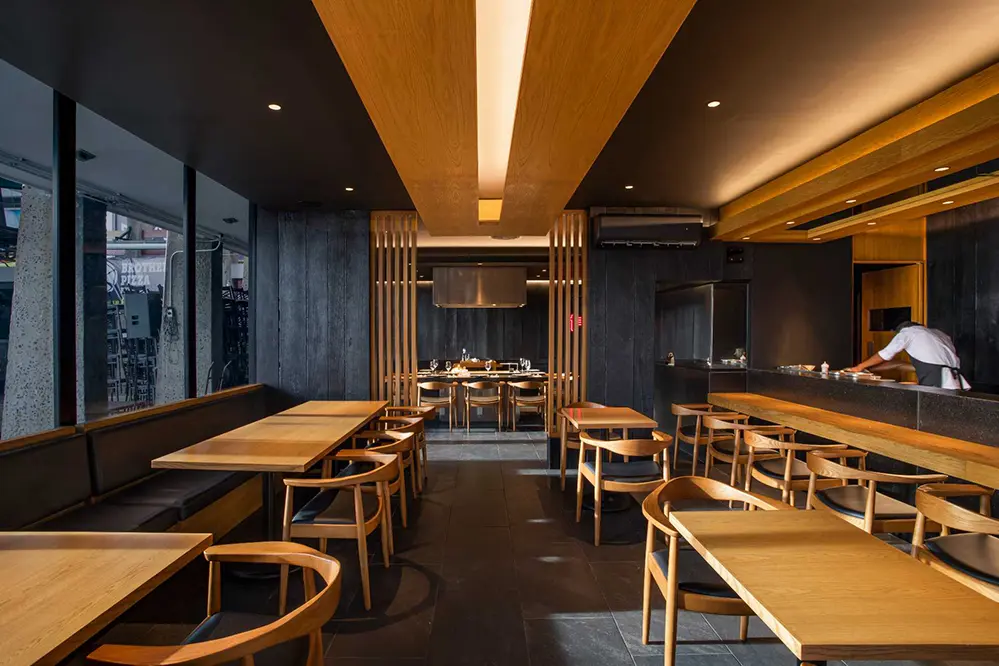
Accent lighting adds a special touch.
It highlights architectural features and key decor elements. This type of lighting is ideal for bringing attention to artwork, wine displays, or special menu boards, giving the restaurant a sophisticated and curated look. Additionally, accent lighting can be used to create a visual hierarchy within the space, directing guests’ attention from one area to another.
Careful placement is key to successful accent lighting.
Consider using adjustable spotlights to provide flexibility and precision in illuminating focal points. By thoughtfully choosing and positioning accent lights, restaurant owners can enhance specific areas while creating a more dynamic dining environment.
Ultimately, effectively implemented accent lighting not only enhances the overall aesthetic but also significantly contributes to the guests’ dining experience. Through a combination of expert design and strategic placement, restaurant owners can transform their spaces into inviting and memorable environments, ensuring their guests feel both comfortable and captivated.
Task Lighting
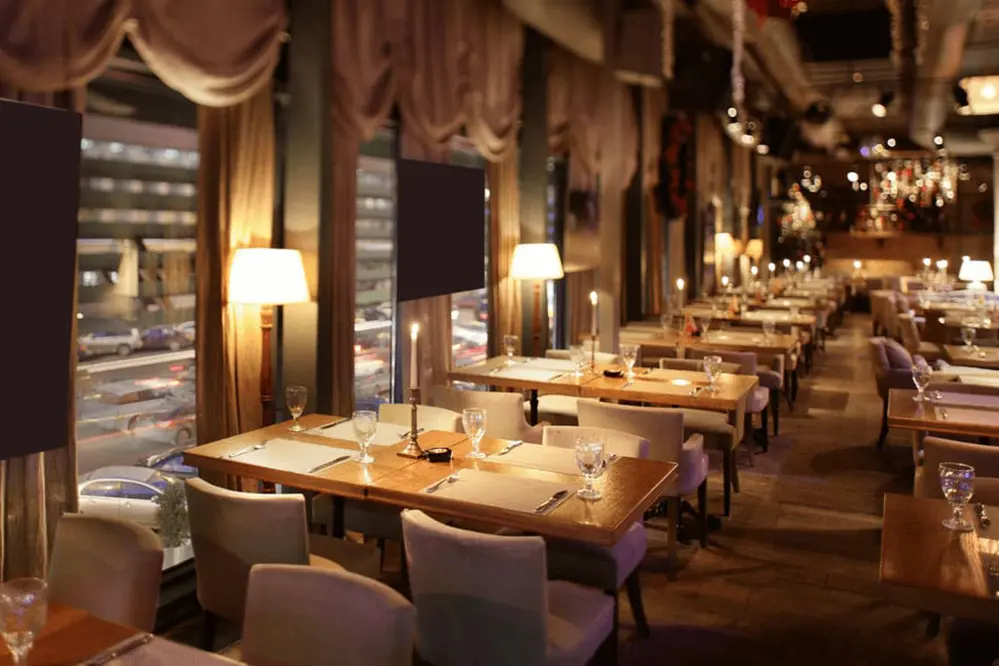
Task lighting is critical in areas where food preparation and service occur.
Bright and focused, it aids chefs and kitchen staff in their detailed work, especially when complemented by natural light.
Properly designed task lighting reduces errors and enhances overall efficiency in the cooking process.
To achieve the best results, consider using LED under-cabinet lights and overhead fixtures. These options provide bright, even illumination while maximizing energy efficiency, allowing staff to work safely and effectively. Modern LED solutions also offer dimming features, ensuring that the lighting can be adjusted based on the requirements of different tasks.
Decorative Lighting
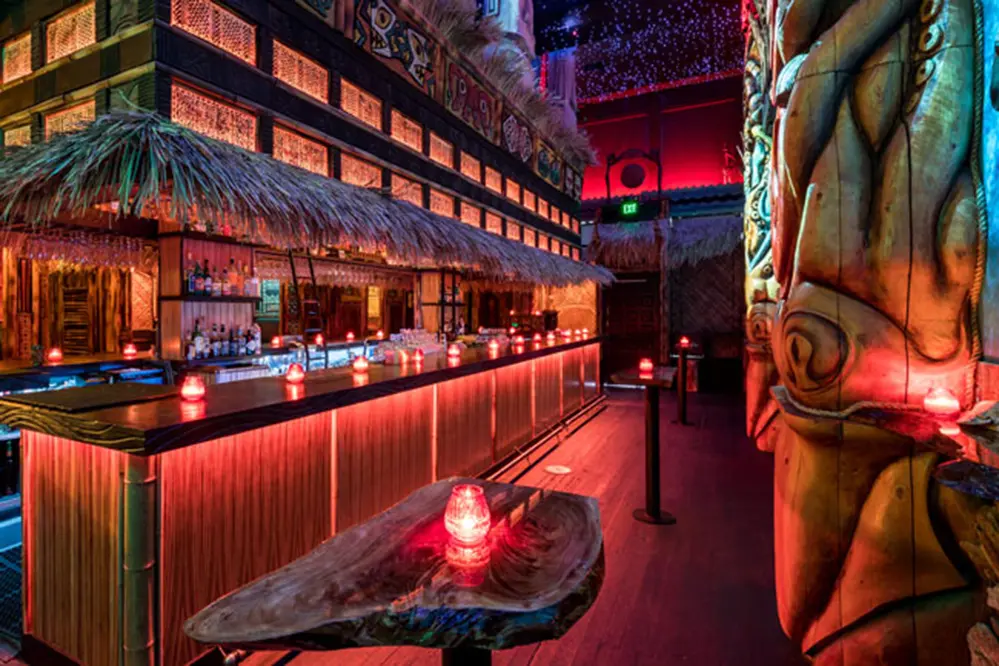
Decorative lighting creates a lasting impression.
These fixtures serve not only to illuminate but also to define the space’s character. The right selection compels guests to feel the ambiance, complementing the restaurant’s thematic elements and enhancing its overall appeal. Exquisitely crafted fixtures can act as focal points, drawing patrons’ eyes to key areas and subtly guiding their experience.
Pendant lights, chandeliers, and wall sconces are top choices.
The integration of these decorative elements ensures a harmonious blend of functionality and style – key attributes in any dining venue. By selecting aesthetically pleasing and energy-efficient LED options, restaurant owners maintain an environmentally conscious brand image.
Moreover, dynamic, color-changing LEDs open possibilities for creative expressions. These lights can adapt to various moods and occasions, providing an ever-evolving dining experience. Ultimately, thoughtful decorative lighting will inspire diners and leave them with a memorable impression of the restaurant.
Installation and Maintenance Tips
When installing LED lighting, ensure the placement enhances both visibility and aesthetics.
Proper spacing is crucial to avoid uneven illumination. To achieve this, they must consider professional guidance, ensuring the lighting scheme aligns with the restaurant’s architectural layout. Additionally, investing in high-quality fixtures will significantly reduce the frequency of maintenance, providing long-term benefits.
Frequently clean the fixtures to maintain their brilliance. Dust accumulation can dull the light output, so a regular cleaning schedule ensures that the lighting remains vibrant. This practice not only extends the lifespan of the LEDs but also sustains their efficiency.
Lastly, it is advisable to keep a few spare LEDs for timely replacement. In the rare event of a malfunction, having a stockpile ensures that the ambiance remains undisturbed. This proactive measure assures the restaurant’s consistent atmosphere, keeping patrons impressed and returning for the dining experience.
Frequently Asked Questions
What is the best color temperature for LED lighting in a restaurant?
Generally, a warm white (2700K-3000K) provides a cozy and welcoming environment.
How can LED lighting enhance the dining experience?
LED lighting can create ambiance, highlighting decor and setting a comfortable mood.
Why are LEDs better than traditional lighting for a restaurant?
LEDs are energy-efficient, have a longer lifespan, and offer design flexibility.
What should be considered when choosing LED fixtures?
Consider the quality, color temperature, and placement of fixtures to achieve optimal lighting.
Can dimmable LEDs be used to create different atmospheres?
Yes, dimmable LEDs are perfect for adjusting the light intensity based on the time of day or special events.
How often should LED fixtures be cleaned and maintained?
Regular cleaning every few months is recommended to prevent dust buildup and ensure peak performance.
Conclusion
Choosing the right LED lighting for a restaurant is crucial for enhancing aesthetics, functionality, and cost efficiency. Proper lighting improves the dining experience, creating a welcoming and visually appealing environment. By following guidelines for selecting LED lighting, restaurant owners can achieve both ambiance and operational savings, ultimately creating a lasting impression that complements their culinary offerings.
